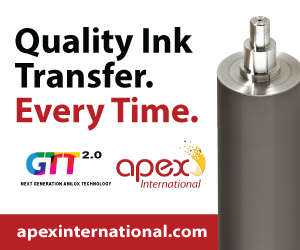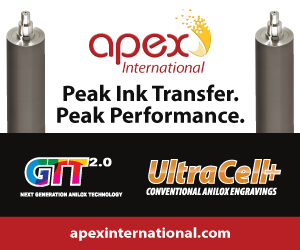by Mary Drain
Many states in the U.S. are now working to increase the transparency of recycling labels and symbols. The aim is to get to the root of industries using symbols, such as the chasing arrows, with little-to-no correlation to what is actually being recycled.
The chasing arrows symbol has been around since 1970 when a corrugated company called Container Corporation of America (CCA – a distant ancestor of WestRock) sponsored a contest to design a symbol to promote their products made from recycled materials. A student from the University of Southern California, Gary Anderson, submitted the winning entry that CCA modified and introduced to the world – the familiar “chasing arrows” symbol.
It seems fitting that the symbol started with a corrugated packaging company. Our industry’s long-standing commitment to recovery efforts has led to an extraordinary success story in the recovery of old corrugated containers (OCC). Today, corrugated is the most recycled packaging material on the planet with a U.S. recovery rate hovering near 90 percent for the last decade.
The problem though is not those who use the symbol on products and packaging that are verifiably recycled, but those who use the symbol in spite of the FTC’s Green Guides instructions for “recyclable” claims. This behavior deceives consumers into thinking that their product/package will be recycled at a level greater than or equal to 60 percent.
A 2019 study from the Consumer Brand Association shows that most U.S. consumers presume that all items marked with the three arrow symbol are recyclable when that is not the case at all. While most plastic products have a recycling symbol, actually less than 10 percent is currently and has historically been recycled annually. The remainder goes to landfill or is burned.
On October 5th, California’s Governor Newsom signed Senate Bill 343 (SB 343) prohibiting the use of the chasing arrows symbol on non-recyclable products and packaging. Under the new law, a product or packaging that displays the chasing arrows symbol or any other symbol or statement, that indicates it is recyclable, is deceptive or misleading unless the product is “recyclable” in accordance with California-specific regulations and is of a material type and form that routinely becomes feedstock used in the production of new products or packaging. Similar proposals have been introduced by legislators in other states as well. Here are recent articles and videos:
• https://www.natlawreview.com/article/california-prohibits-use-chasing-arrows-non-recyclable-items
• https://www.cbsnews.com/news/recycling-symbol-false-advertising-california-oregon-new-york/
• https://thehill.com/policy/equilibrium-sustainability/574191-house-democrat-offers-bill-to-create-tax-on-single-use?rl=1
These proposals are all steps in the right direction. They are evidence that the growing focus on reducing plastic pollution and recycling accountability should and will be taken seriously. Our industry has been focused on recycling accountability for decades – it’s about time some of the others got started.
Mary Drain is the Director of Technical Services at Fibre Box Association (FBA). Reach her at [email protected].





